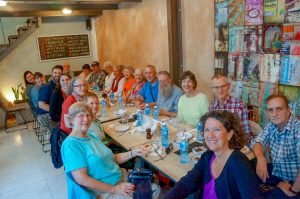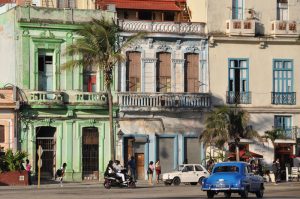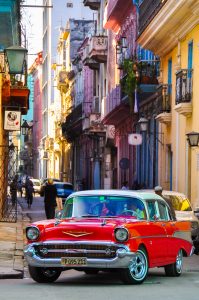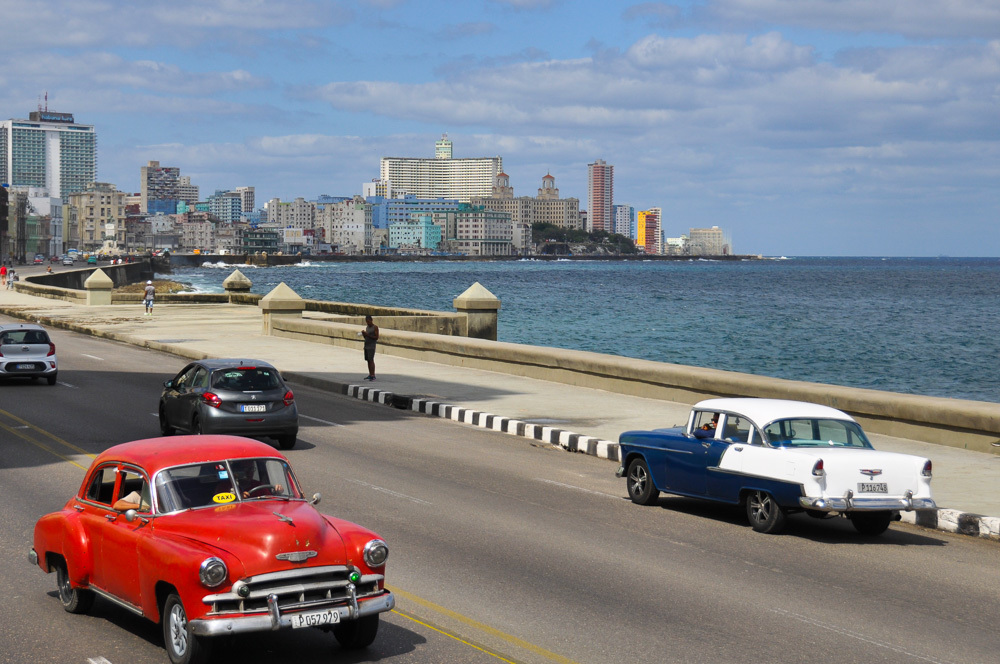In March 2018, Eastern Mennonite University hosted an Alumni and Friends Cross-cultural Tour to Cuba – the second of two travel events to commemorate EMU’s Centennial year and the impact of its distinctive cross-cultural immersion experiences.
The first tour to Israel/Palestine, with longtime leaders Linford and Janet Stutzman, traveled in November 2017 to rave reviews.

The Cuba group filled quickly—and another trip is scheduled for March 21-30, 2019. (The deadline to register is Aug. 31. There are also trips to Lithuania, Israel/Palestine and Ireland: go here to read more.)
If you’re interested in going to Cuba, now is the time, says Jeff Shank, director of alumni and parent engagement. Restrictions by the Trump Administration in November 2017 limit travel to those going with an organized, U.S.-owned company.
These same regulations, Shank says, call for Americans to participate in “people-to-people” tours emphasizing educational and meaningful experiences shared with area residents –exactly the kind of travel EMU cross-cultural planners have specialized in for their undergraduate students for years.
That means the schedule is full and the experience truly informative about a country’s culture, arts and history, said Braydon Hoover ’11, director of development & annual giving, who traveled to Cuba on this first trip with his wife Heidi Muller ’11 Hoover, leaders Nathan Barge and Elaine Zook Barge, and 17 others.*
“Our alumni tour to Cuba was everything a cross-cultural ought to be – challenging our preconceptions, expanding our worldviews, introducing us to new friends, and surprising in all the right ways,” he added.
More from Braydon Hoover

It’s easy for Americans to condense Cuba into a few choice images. Of course, all those beautiful Chevys and Fords frozen in time come immediately to mind. Old women smoking enormous cigars and the smooth Afro Cuban rhythms of the Buena Vista Social Club, too.
Romanticizing the 40’s and 50’s, my mind’s eye could picture Papa Hemingway himself, sipping daiquiris in the warm tropical breeze while drafting The Old Man and the Sea.
Perhaps the most prominent image, especially for those of us who lived through the Cuban Missile Crisis and its aftermath, is the ever-looming legacy of Fidel Castro and that big, scary C-word (turns out it’s more akin to democratic socialism than Soviet Union-era politics, but more on that later…)
While Cuba is certainly an amalgamation of all these, the country and its people are so much more than what we’ve been led to believe – I certainly discovered that from our first day in Havana.
What we don’t hear is that one of the very first programs instituted by the Revolutionary government was a literacy campaign (it’s historic impact now enshrined in the National Museum of the Campaign for Alphabetization, one of the first stops of our trip). This campaign led to the complete eradication of illiteracy on the island and began a series of reforms that nationalized education through the 11th grade and beyond. The Latin American School of Medicine, another stop on our cultural tour, provides tuition-free medical education to anyone (even citizens of the U.S. whom we met). The only stipulation? Students must return to their home community after graduation and serve those that need it most.

While the national discourse in the U.S. on universal healthcare reaches a boiling point, Cuba has settled into an effective, communal system that cares for every citizen. A doctor is a public servant, serving community blocks of approximately 1,000 from birth to death. They live above their clinics and are on hand 24/7. A newborn will be looked in on every day during their first year of life and the medical histories and nutritional habits of the elderly are comprehensively known. Dr. Barb even joked that she sticks her finger in the dinner pot on her rounds to make sure her treatment instructions are being followed!
We were also fortunate to visit Cuba during the lead-up to their elections in April where, for the first time in 60 years, a non-Revolutionary was likely to take the helm of governance (and did!). The excitement was palpable without a single billboard, pamphlet, or political television ad to be seen (a novel idea, I know). What’s more, the people have more of a direct say in their elected representatives than what the Electoral College grants the U.S. And as Cuba continues to evolve, so too does its economy. We frequently ate our dinners at privately owned and operated restaurants, called paladars, which was one of the first steps Raul Castro took toward a mixed economy.
Soaring above everything else is the indelible nature of the Cuban people, the resiliency. It’s a land of near-constant revolution. Through upheaval after upheaval, oppression upon oppression, Cubans – an eclectic and beautiful mix of cultures – have adapted, been transformed, and, I suspect, be transformational on the world’s stage in the years to come.
Lest you think these alumni cross-cultural tours are all work and no play, we also had ample opportunity to walk along the Malecón and be kissed by the sea; purchase fruit and sandwiches, art and mojitos in Old Havana; and swim in the Bay the Pigs (you read that correctly). We met with some of the top scholars and leaders in Cuban culture and traveled with tour guides as knowledgeable as they were kind… Muchas gracias, Martin Luther King Jr. Center and Natan y Elena!
*Editor’s note: Because all four of these folks are EMU alumni and Elaine and Nathan are “double Royals,” grad years were omitted so the sentence didn’t get overly numerical. But for the curious, Braydon graduated in 2011 and Heidi in 2010. Nathan earned his BA in 1984 and an MA in conflict transformation in 1999. Elaine earned her BA in 1975 and completed an MA in conflict transformation in 2003.
